We've put together some of the best traditional yummy Filipino foods to enjoy, from the famous and well-loved adobo, to the notorious balut!
“Stefan, get that duck embryo away from my face…!” 🦆
…Balut…the infamous and in my opinion, quite terrifying culinary surprise of the Philippines! It's a 19-day old fertilised duck embryo, which is a popular dish throughout the country. We've tried some pretty out-there dishes in our travels, but the Philippines definitely takes the biscuit with balut!

Despite the (ahem!) unique and unexpected crunch(!) of the balut, the food of the Philippines is full of so many delicious and diverse flavours to discover. The variety of food speaks volumes about the country's rich history, which has evolved so much over time.
What we noticed the most is how unique Filipino food is from all its Asian neighbours. It was like nothing else we'd ever tried from any other country we'd visited in Asia! In particular, the strong influence of the USA and Spain – both former colonizers of the Philippines over the last 500 years.

Advice for LGBTQ travellers to the Philippines
The information we present in this guide is from our experience and perspective travelling as a gay couple in the Philippines, a destination we found to be one of the most gay friendly countries in Asia. However, homophobia is still prevalent in more rural and remote areas, so LGBTQ travellers should take care. Also, we advise all travellers to avoid the south, especially Mindanao, the Sulu Archipelago and the Zamboanga Peninsula as violent crime is prevalent there. For more, read out our article about why we think the Philippines is such a gay friendly country.
What makes Filipino food so diverse and exciting?
Filipino cuisine is the ultimate fusion food! It is the melting pot of so many different cultures leaving their mark here over the last few thousand years.
The location of the Philippines in the South China Sea has always been strategically important, making it the focal point of trade and migration dating back to Malayo-Polynesians in around 3,000 BC. The Malayo-Polynesians were the first settlers here, also responsible for bringing the #1 staple ingredient to the Philippines: rice.
Subsequent prominent settlers who left their mark in the Philippines included the Chinese, the Spanish and the Americans. The Chinese brought with them soy sauce, bean sprouts, tofu and noodles. The Spanish introduced new cooking methods like sautéeing and braising, as well as new ingredients like corn, potatoes, tomatoes, garlic and onions.
Finally, the Americans brought with it hot dogs, hamburgers, fried chicken (Jollibee anyone?) and the idea of “cooking with convenience”.
So for example, the national dish, adobo, was heavily influenced by the Spanish adobo but embellished with soya sauce – an ingredient introduced by the Chinese, and using herbs native to the Philippines like bay leaves and peppercorns.
The other thing we noticed about eating in the Philippines is that it is a joyful experience – an occasion rather than just a quick meal. The Filipinos are an incredibly sociable and extrovert bunch. Mealtime is the perfect excuse to meet and socialise.
🍚 And the most important thing of all about eating in the Philippines? No meal is complete until the rice has been served:
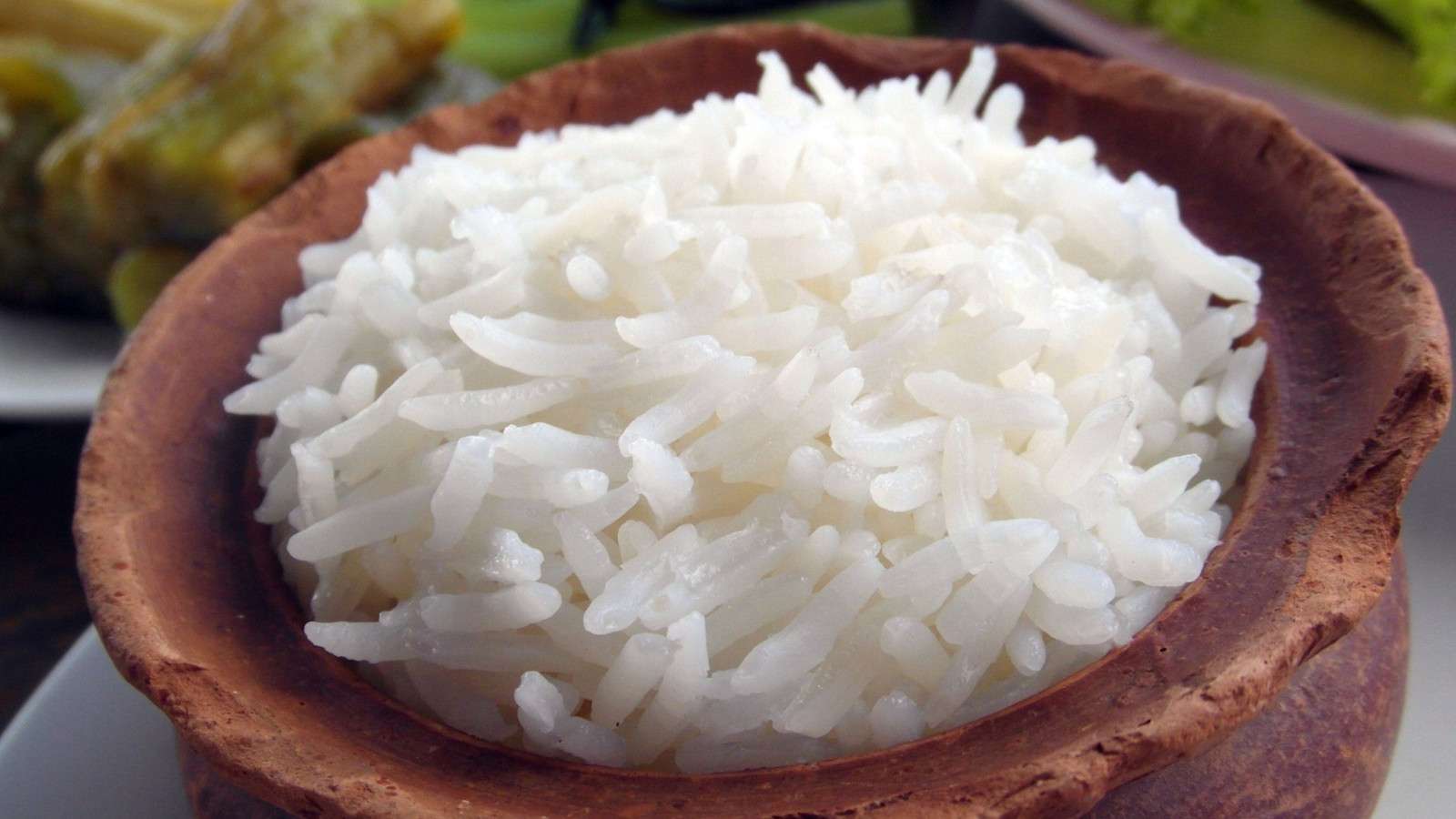
15. Turon: banana spring rolls
We love turon, the sweet spring roll filled with banana from the Philippines. Well, traditionally turon was made with a type of plantain known as saba or sometimes with jackfruit as the filling. The fruit is thinly sliced longways and dusted with brown sugar, then wrapped up in a normal lumpia spring roll wrapper to be deep-fried in oil.
Turon can be found at street-side stalls all over the Philippines, it's usually treated as a portable snack more than a dessert. Sometimes you might even find turon varieties filled with mango, sweet potato, cheese or coconut. No matter what, it's always something sweet and delicious inside the crispy wrapping!
We loved one of these delicious gooey sweet treats, they kind of remind us of a Filipino version of churros. Occasionally we even found places that served the golden fried parcels with a drizzle of caramel or sprinkled with sesame seeds.
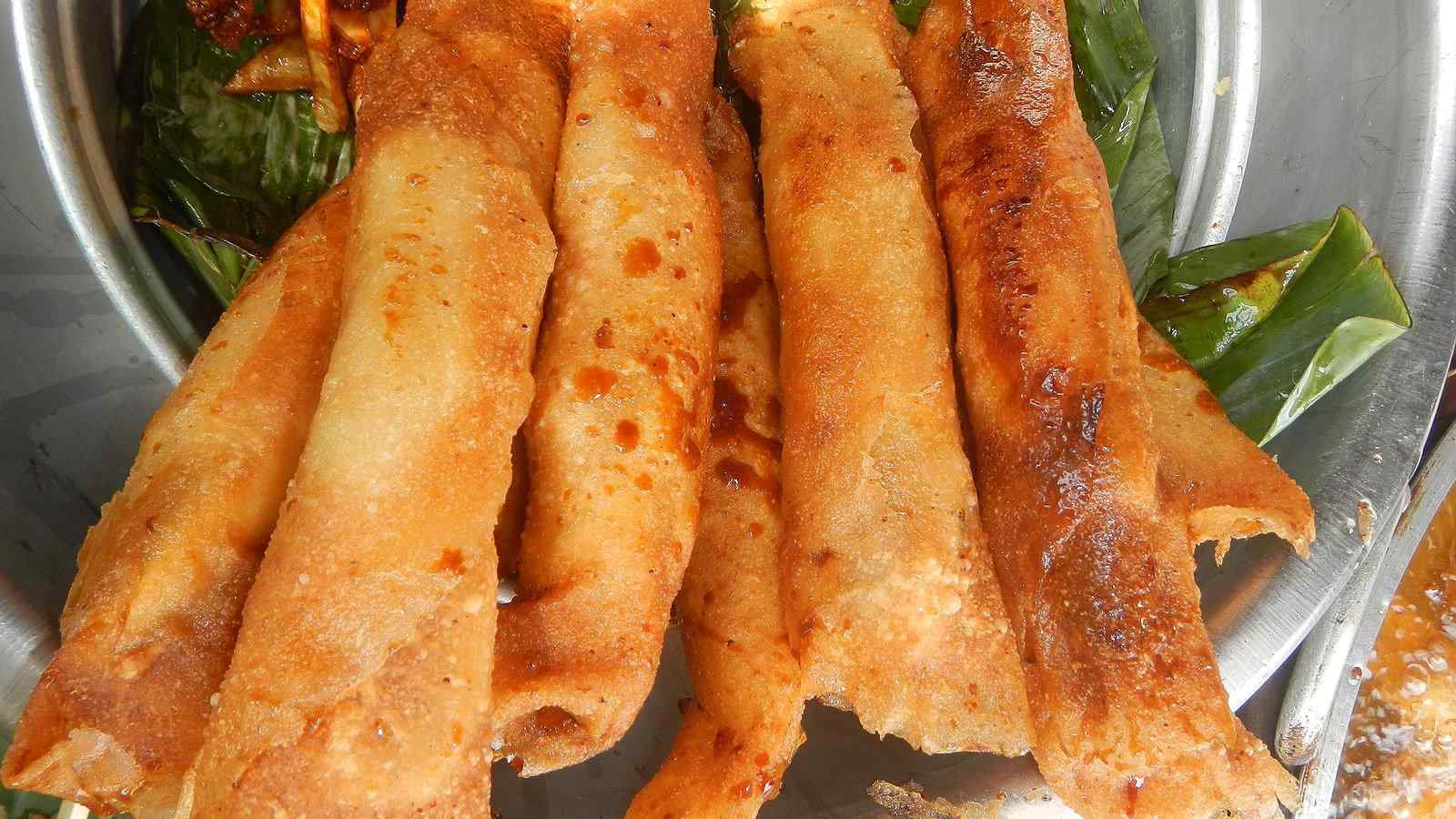
14. Kamaru: crunchy fried crickets
If slimy worms aren't up your alley then there is another unique Filipino dish for those with adventurous taste buds – kamaru! And what is that, we hear you ask? Well, kamaru are crickets, specifically mole crickets, although many people call them rice field crickets since they are usually found on rice fields.
The crickets are packed with vitamin B and protein plus they are very cheap to buy, even if it might be difficult to catch them. Kamaru is a delicacy in the Pampanga province, where it's usually prepared by boiling the crickets in vinegar and oil then sauteeing them in oil, onion, and chopped tomatoes.
Eating crickets is a bit of an acquired taste; they're crunchy at the first bite, followed by a bit of mushiness with the juices seeping out but they do taste good. If you can bring yourself to eat bugs, you might just be rewarded!
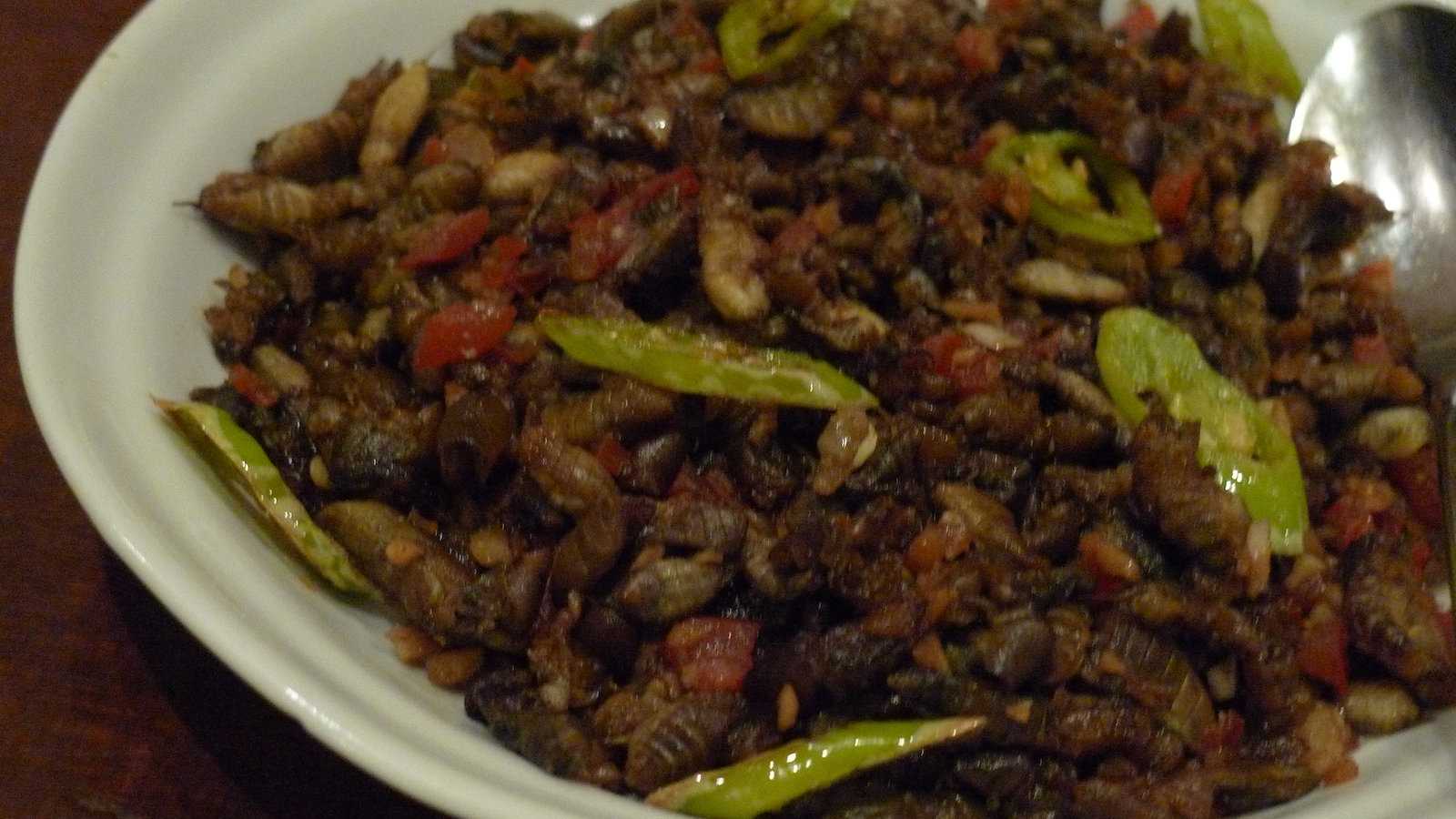
13. Lumpia: Filipino spring rolls
We love spring rolls pretty much everywhere we go! These crispy deep-fried treats were brought to the Philippines by Chinese traders (like most spring roll varieties) where the Filipinos embraced the dish and made it their own. The Filipino spring roll is called lumpia and differs from other Asian varieties in a few ways.
Lumpia are usually made with a very thin wrapper made from only rice flour, water, and salt. They're also traditionally made much thinner and longer than other kinds of spring rolls, although these days they can be all sorts of sizes. They're filled with minced meat and vegetables, the specifics vary depending on regions.
Once the lumpia are all crispy delicious they're usually served with a peanut or sweet and sour sauce on the side for dipping. At Filipino feasts, you'll always find plenty of lumpia to eat, as they're so easy to make to feed many people.
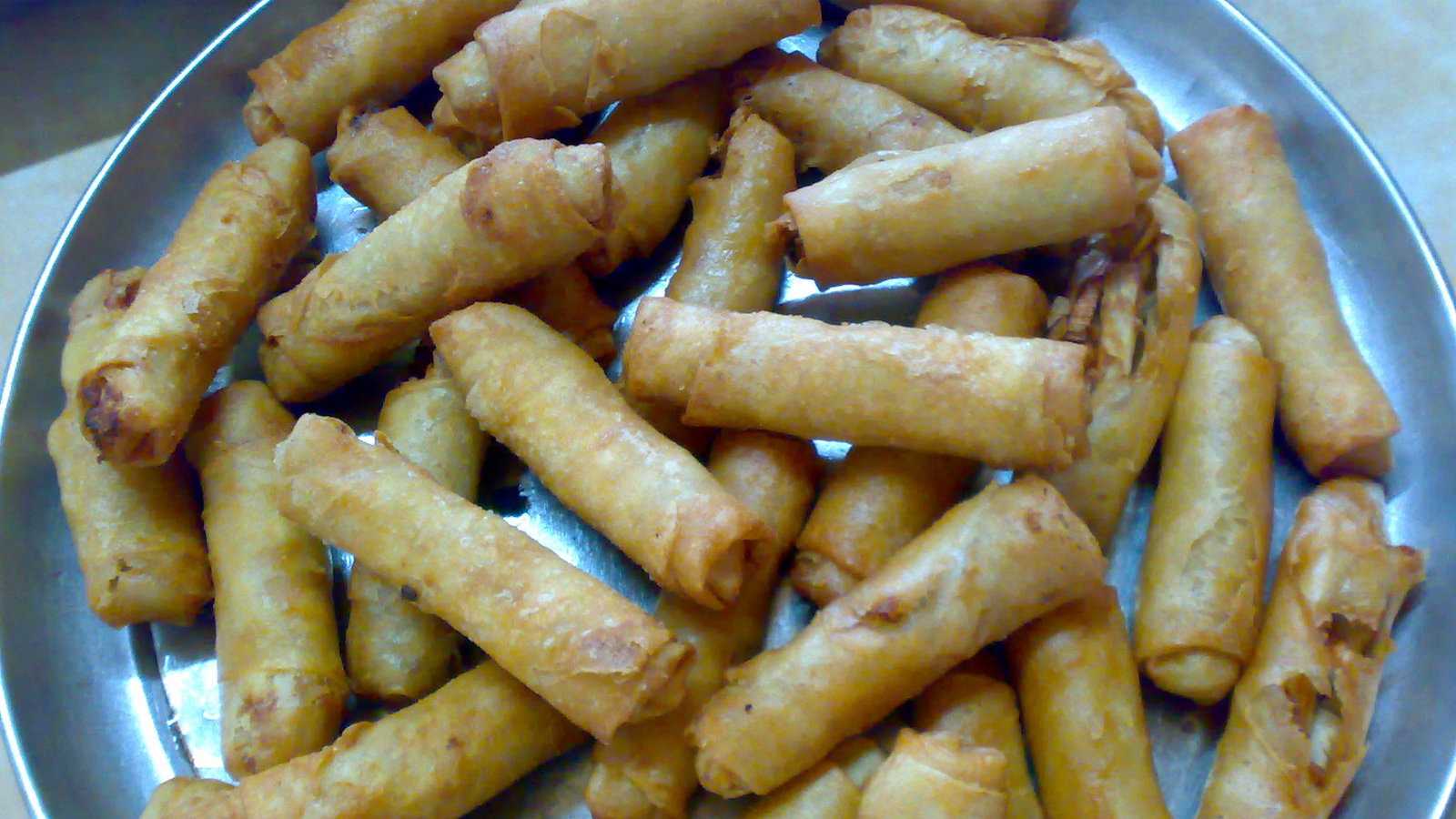
12. Pancit palabok: noodles with shrimp gravy
Any dishes based on noodles in the Philippines are called “pancit”. Pancit palabok (aka noodles with shrimp) is one of our favorites. While the basis for pancit dishes was brought to the Philippines by the Chinese, pancit palabok is one of the resulting recipes that are completely Filipino.
Pancit palabok is made by pouring a creamy bright orange shrimp-based sauce over the noodles, then adding pork, hard-boiled eggs, more shrimp, and other ingredients on top. Once you mix everything together, this delicious dish is bursting with flavor. It gets its signature bright orange color from annatto powder in the shrimp sauce.
Traditionally, pancit palabok is served for birthday parties and other special occasions because the long noodles represent a long life – so long as you don't cut them! Nowadays you'll be able to try pancit palabok in Filipino restaurants both in the Philippines and around the world.
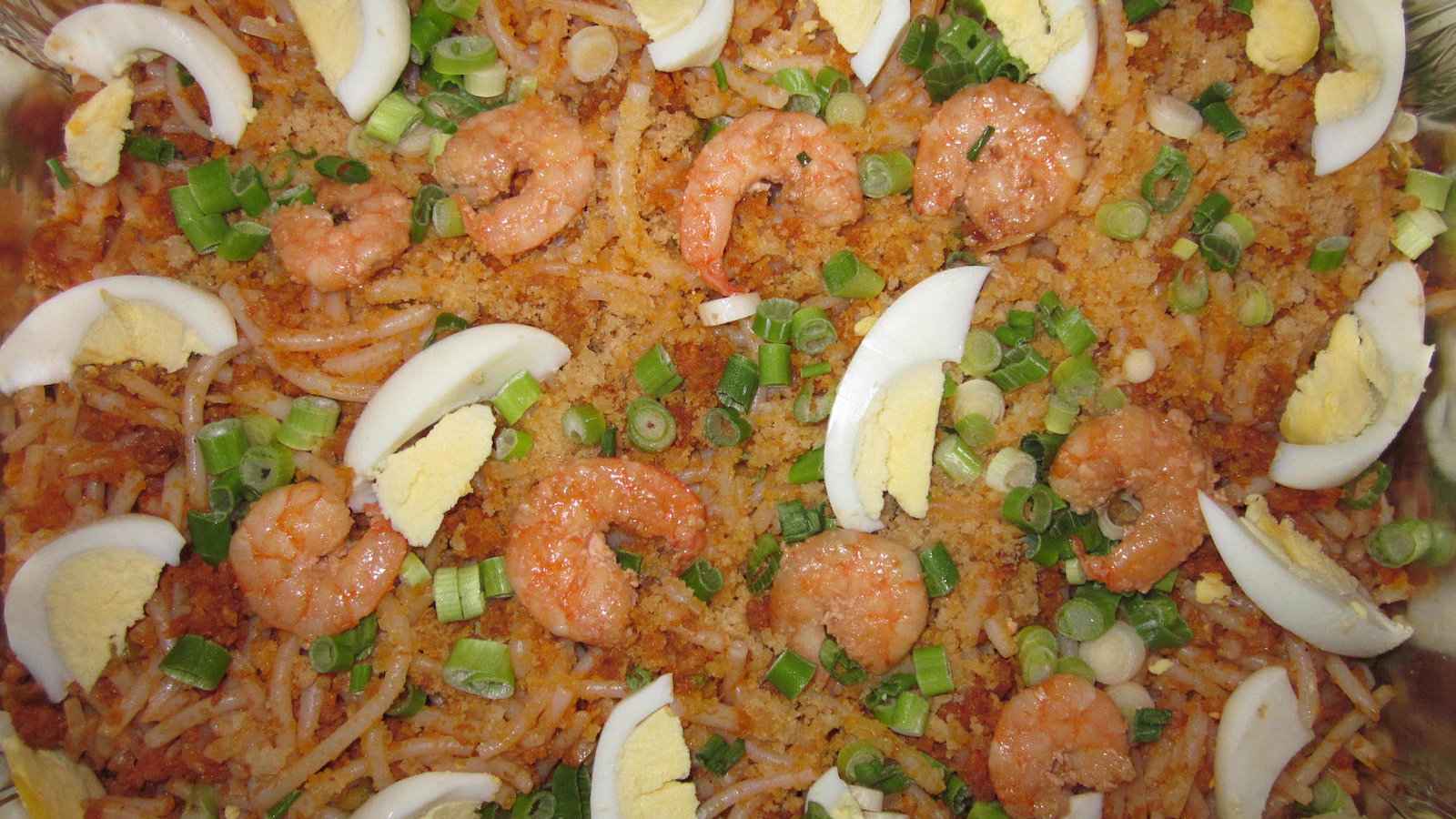
11. Tamilok: the woodworm delicacy!
Now THIS is something that took our breath away when we first heard about it…!
While tamilok is called a woodworm it's technically a kind of shell-less mollusk. They are found in mangrove swamps in the Philippines as they thrive in salt-water and burrow into submerged, rotting wood to feast. Since they're rather hard to get (you have to go wading into mangrove swamps, find rotting submerged logs and break them open) they are regarded as something of a delicacy in the Philippines.
If you can bring yourself to swallow a long grey worm you will find the taste and texture are similar to that of eating raw oysters. Tamilok is usually served ceviche-style – raw, with coconut vinegar, salt, and chili for dipping.
Tamilok was traditionally reserved for special occasions in Filipino culture but as its popularity among tourists wanting to try something strange has grown, so has the demand for harvesting more of them. We'd recommend only trying it perhaps once so that you can say you've done it, but aren't contributing too much to the destruction of mangrove eco-systems.
10. Arroz Caldo: the Filipino porridge
Arroz caldo is the Filipino porridge equivalent, a popular breakfast dish and comfort food that all our Filipino friends swear by.
It starts out as a sort of chicken soup with rice cooked in water with chicken stock. However, unlike chicken soup, the mixture is cooked for longer until it turns into a thick porridge – this is the arroz caldo!
It is then infused with ginger and garnished with toasted garlic, scallions, and black pepper. It is usually served with calamansi or fish sauce as condiments, as well as a hard-boiled egg.
Although arroz caldo means “rice broth” in Spanish, it was in fact based on the congee introduced to the Philippines by Chinese immigrants many centuries ago.
A traditional arroz caldo uses glutinous rice and is slightly yellow in colour. This comes from the addition of kasubha (safflower) or saffron. In the absence of safflower or saffron, turmeric can be used instead.
🐸 Other variations of arroz caldo include a French inspired “arroz palaka” where instead of chicken, frogs' legs are used (palaka means “frog” in Tagalog)!
Another interesting one we discovered was a vegan variant which uses mushrooms or tofu in place of meat.
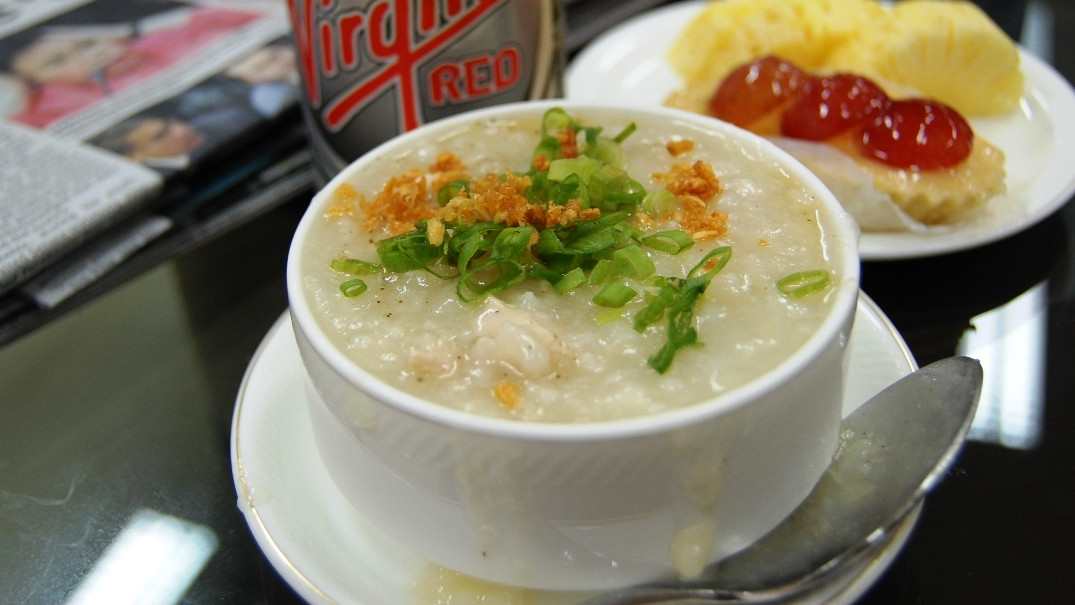
9. Buko pie: the divine Filipino coconut pie
I love coconuts a lot – it's my favourite fruit. So a dessert made out of coconuts? My daily staple in the Philippines!
Buko pie is a baked coconut custard pie, the speciality of Los Baños on Luzon island. It has condensed milk added to sweeten it. What I also love is that the coconut meat is also used in the cake. Other variations to the many buko pies I've consumed include the addition of vanilla, pandan and almond.
Buko pie is a recent discovery, entirely by accident by the Pahud sisters from Los Baños, Laguna. One of the sisters returned to her family in the Philippines after working as a maid in the USA where she learned to make apple pies.
The sisters tried to recreate the American apple pie, but in the absence of apples in the Philippines, they used another fruit they had in abundance – bukos! The idea took off and became one of the most popular desserts in the Philippines.
Fellow coconut lovers listen up – buko is the word for coconut in Tagalog. Unlike the traditional coconuts which are smaller, slightly hairy and brown in colour, Filipino bukos are much larger, smoother and green.
They have a lot more juice inside which makes them so much more satisfying, especially when you want to refresh your body and cool down in the hot, humid Filipino weather. It's also a fantastic source of potassium, sodium, magnesium and iron, which is why the coconut tree is nicknamed the ‘Tree of Life’ in the Phillippines.
For us, no day in the Philippines was complete without a buko or two. First drinking the nourishing juice inside, then hacking it open with a machete to eat the yummy fleshy fruit inside. All lovingly washed down with a few bites of buko pie of course!
The Filipinos make good use of the Tree of Life: other than the many uses of the fruit itself, you can also use it as firewood, the leaves for thatching, the coconut husk to make ropes and more.
Coconuts are so ubiquitous in the Philippines that the country has become the second-largest producer of the world’s coconuts (after Indonesia).
🥥 It's no wonder that we quickly became Bucoholics during our trip to the Philippines…see what we did there? 🥥
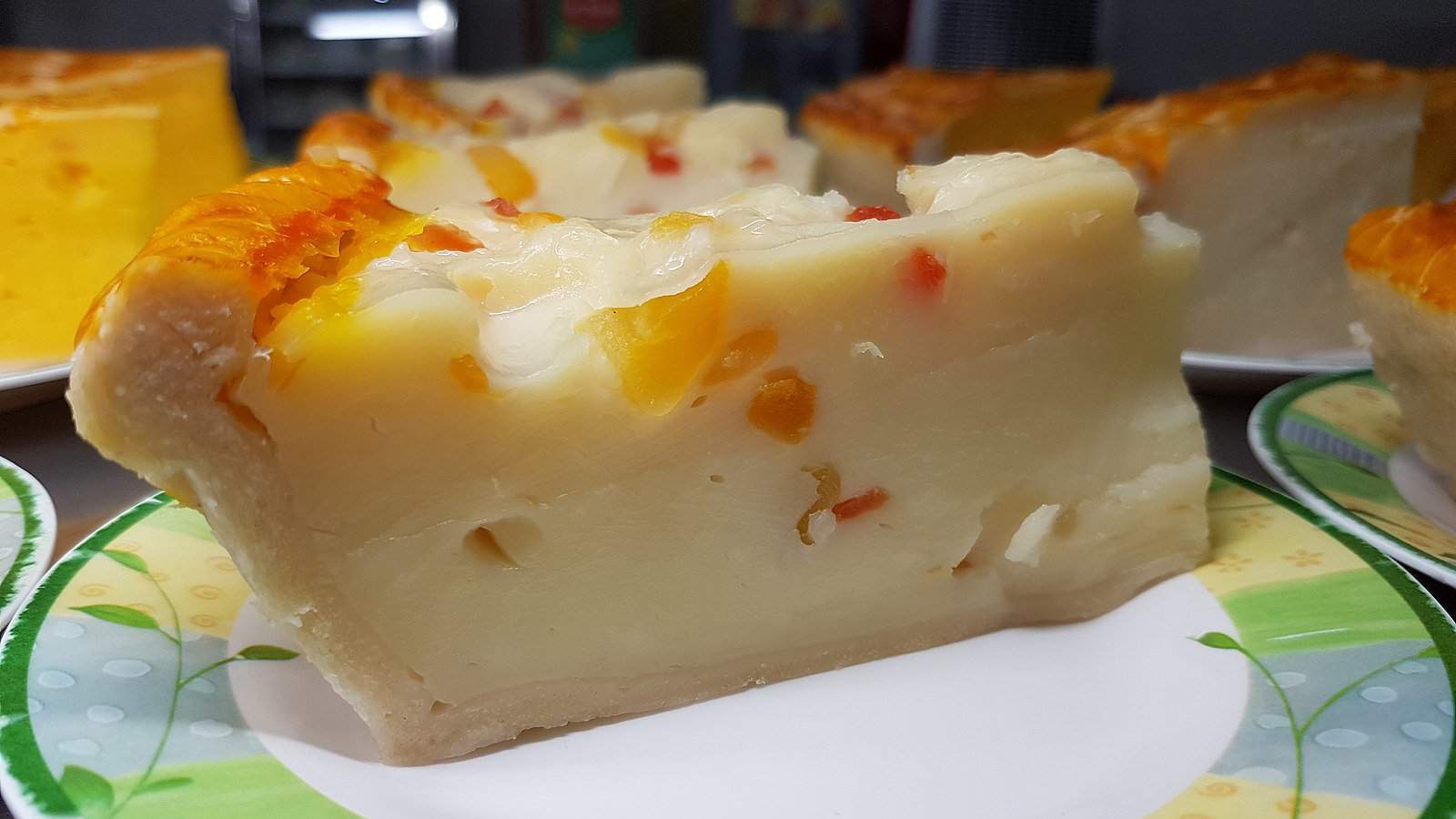
8. Halo halo: the best Filipino dessert
This is THE ultimate and most famous of all Filipino desserts! Halo Halo means ‘mixed together’ in Tagalog. It is served in a tall glass containing ice shavings, evaporated milk and various small chunks of yummy goodies all mixed in together.
🍨 What are the yummy goodies I hear you cry?
Well this includes a mix of boiled kidney beans, chickpeas (“garbanzo”), sugar palm fruit (“kaong”), jackfruit, tapioca, sweet potato, sweet beans, coconut gel, ice cream, guava paste, purple yam and more!
There is no one exact formula or recipe, as long as you have a fabulous mix of all of these thrown in with the shaved ice and evaporated milk.
The end result is a tropical, colourful and very tasty mess, perfect for the beach. Every time we went to one of the many beaches in the Philippines, there'd always be a vendor with a huge queue selling halo halos!

7. Tapsilog: the King of the Filipino breakfast
Taspsilog is a popular breakfast dish in the Philippines. The name itself refers to the contents comprising the meal: cured beef (“tapa”), fried rice (“sinangag”) and a fried egg (“itlog”).
The beef in a well made traditional Filipino tapsilog is seasoned with a sauce that is a mix of soy sauce, calamansi juice, brown sugar, minced garlic and black pepper. The rice is fried with lots of garlic to give it a strong (and tasty!) aroma. Finally, the egg is usually served sunny side up. To complement a traditional tapsilog, vinegar or pickled papaya (atchara) is sometimes served.
Variants of tapsilog include “adosilog” (adobo with fried rice and fried egg), “litsilog” (lechon with fried rice and egg).
The most unique of all – “Stefansilog” (a Stefan with fried rice and egg)…ok this is just us being silly…
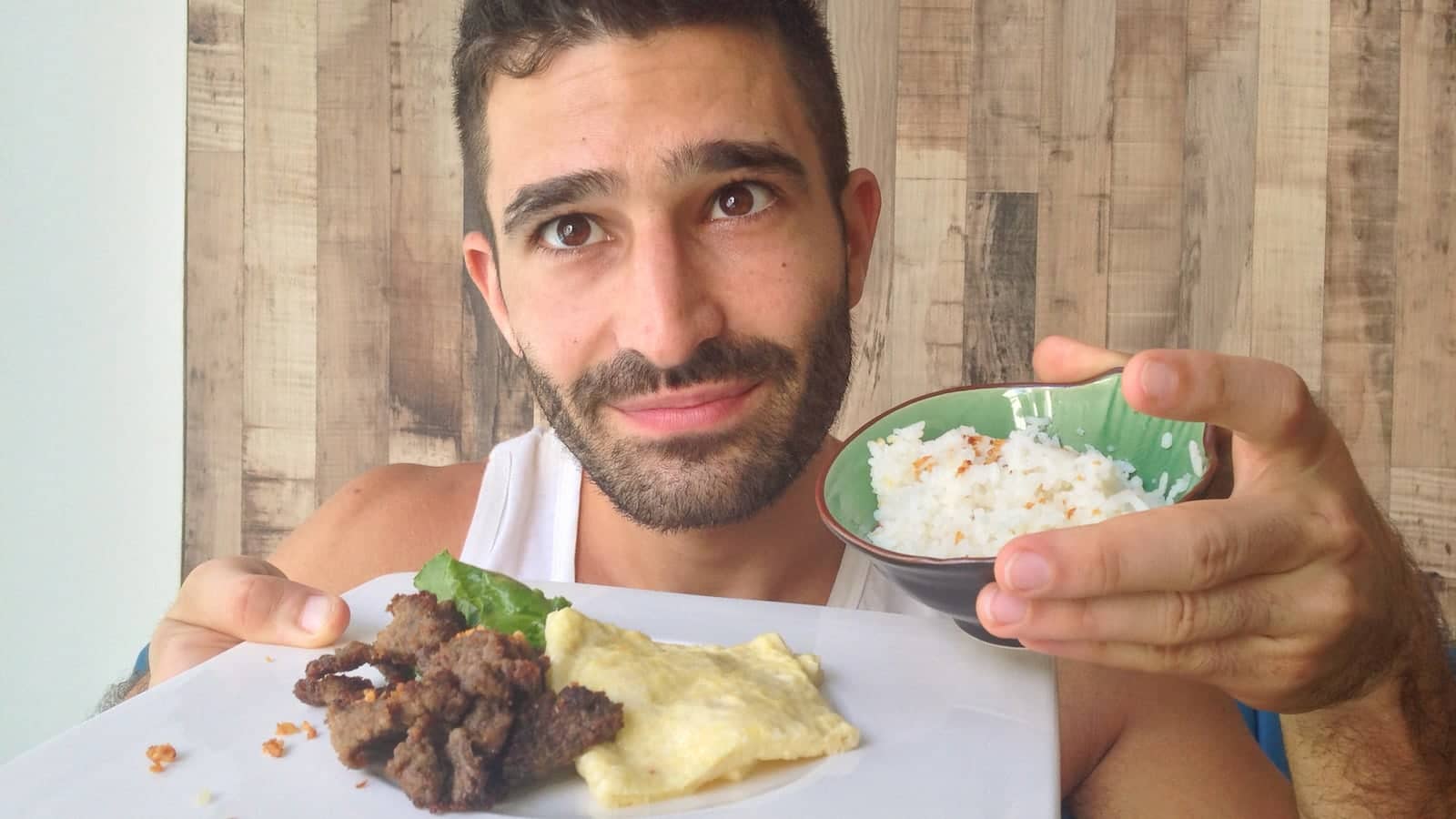
6. Lechon: roasted suckling pig
Lechon is a “suckling pig” in Hispanic traditions. It is literally an entire young pig that has been fed on just its mother's milk (the word for milk in Spanish is leche), which is roasted over charcoal for many hours.
Lechon is also considered the national dish of the Philippines. The city of Cebu is considered one of the most famous places in the country for lechon.
Lechon is also very popular across Spain and large parts of Latin America, usually reserved for special occasions. It's one of the many similarities that the Philippines has with Hispanic culture.
The leftovers of the lechon are stewed with vinegar and spices and become a delicious dish called paksiw na lechon. Paksiw literally means: to cook and simmer with vinegar.
🐷 Look at this little cutie:
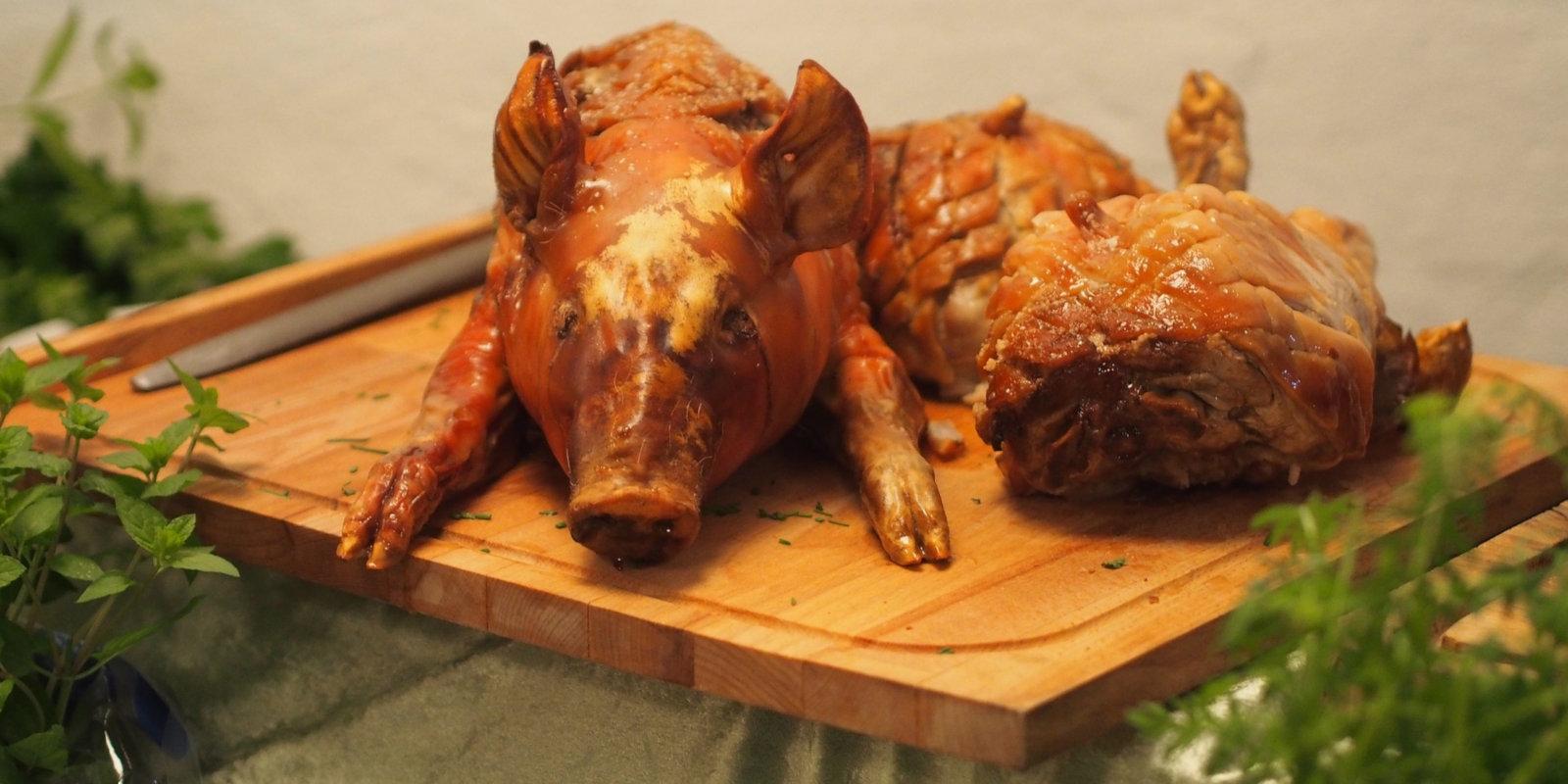
5. Sinigang: sour meat stew
Sinigang is another popular Filipino stew. It is meat-based and more sour and savoury in flavour than a kare kare – usually using tamarind (sampalok) as the souring agent. Alternative souring agents include guava, tomatoes or kalamansi.
A traditional sinigang is served as a stew or soup, always served with lots of vegetables like okra, water spinach, (kang kong), daikon (labanos), onions and aubergine (eggplants). Pork (sinigang baboy) is the most common meat for sinigang, but chicken (sinigang na manok), beef (sinigang na baka) and fish (sinigang na bangus) can also be used.
We enjoyed this soup so much that our Filipina friend BC Lee was kind enough to give us her recipe for sinigang baboy. You can, of course, buy the tamarind mix in a packet from the supermarket, but it's so much more flavoursome if you make it fresh.
As you can see in the image below, Sinilang doesn't look too appetizing, but we can assure you, it is YUMMY!
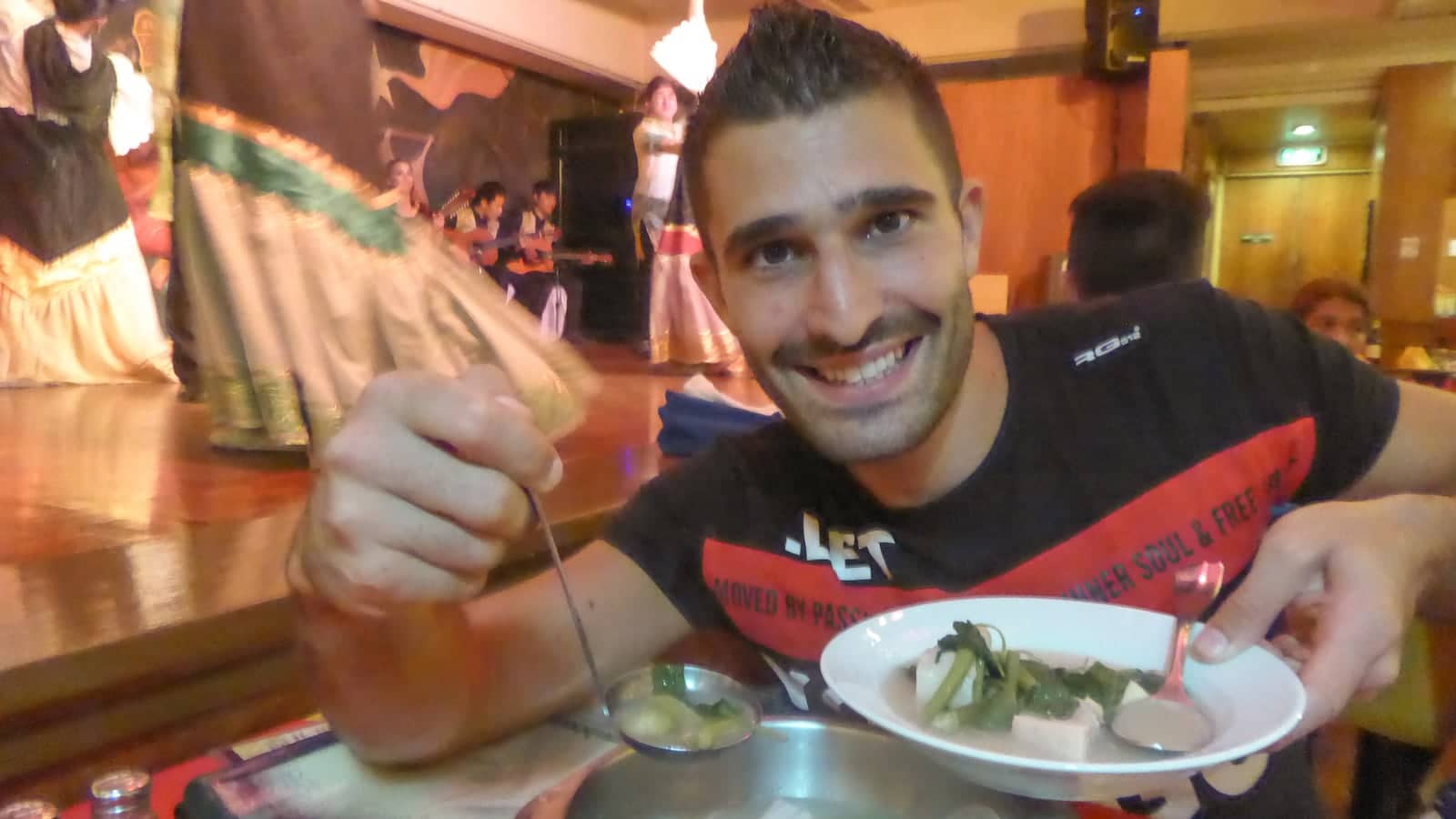
4. Kinilaw: raw fish salad
Kinilaw is similar to the famous Peruvian dish called ceviche. The word “kinilaw” or “kilaw” means ‘eaten fresh’ in Tagalog. It is a raw fish salad served in an acidic juice, usually kalamansi (Filipino lime) and vinegar.
In the Philippines, vinegar is nicknamed “liquid fire” because it cooks the food enough to be digested. More interestingly, vinegar in the Philippines is produced by alcoholic fermentation of coconut water, which is what gives it a sour-sweet flavour.
Just like with ceviche, the acid from the lime and the vinegar “cooks” the meat. Other ingredients usually in a kinilaw include garlic, ginger, onion, pepper and chilli.
We tried lots of kinilaw🐟 in the Philippines, one of our favourites was the one at Los Indios Bravos in Boracay (see below):
3. Kare Kare: oxtail stew
Kare kare is a stew with oxtail, ox tripes, lots of vegetables, which is flavoured with ground roasted peanuts (or peanut butter), onions and garlic. It's served with shrimp paste ( called “bagoong”), calamansi juice (Filipino lime) and sometimes spiced with chilli.
Kare Kare is famous throughout the whole country. The alleged origin of its name is from the word “curry” – a nod to the influence of the Philippines' Indian community in the Cainta area of Metro Manila. It is thought to have originated from the Indian soldiers who settled in the Philippines during the British invasion.
We tried it in Manila and found it quite tasty. However, the rich peanut sauce makes it super heavy so that after the 3rd spoonful, you feel full!
For most Filipinos, kare kare is seen as comfort food, which they would have eaten for dinner growing up – freshly and lovingly prepared by their inay (the Tagalog word for mummy).
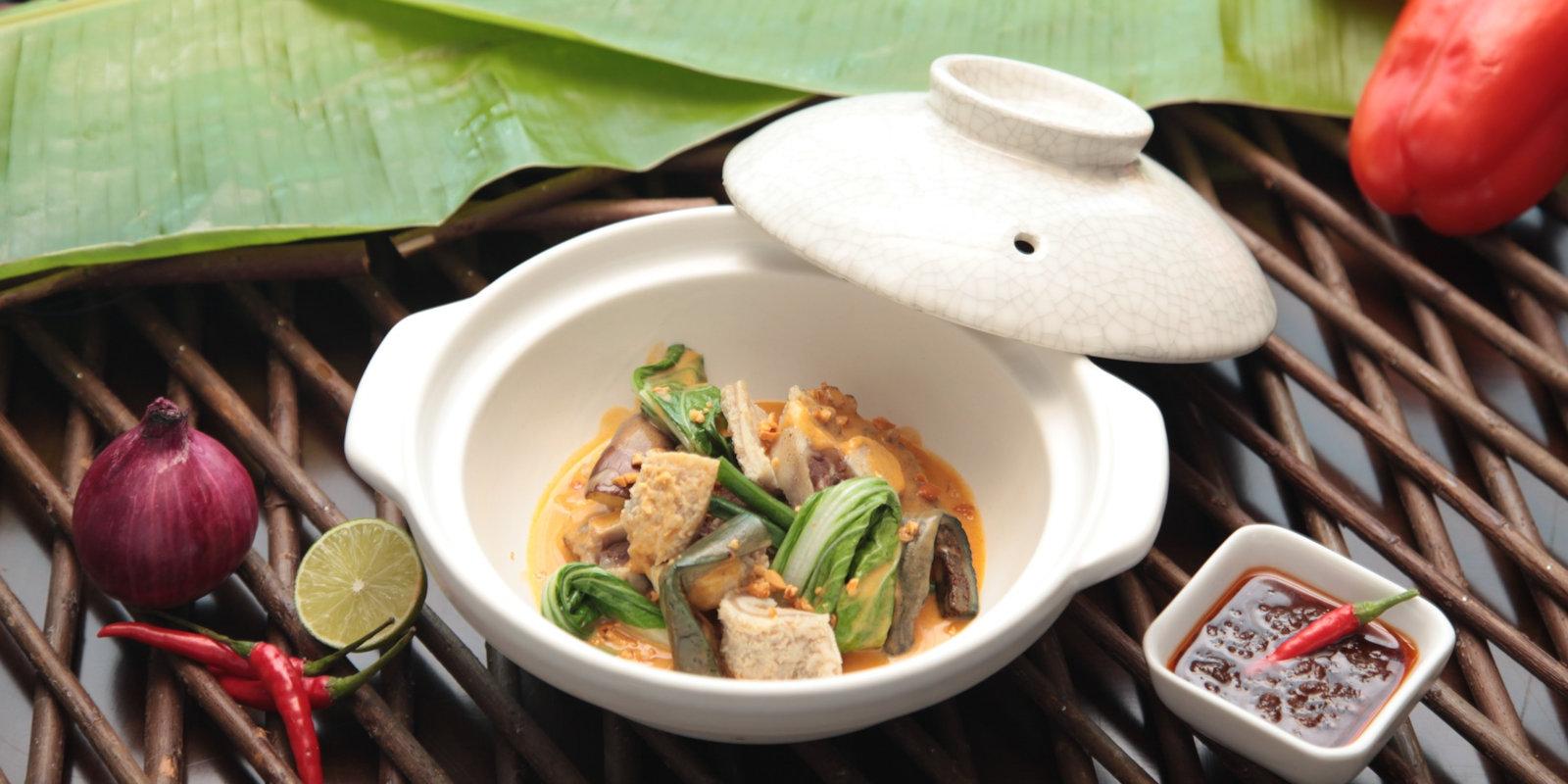
2. Balut: the Filipino Kinder surprise!
Now THIS bad boy always raises eyebrows with tourists in the Philippines…
Balut is a developing duck embryo boiled and eaten as a snack in the shell, often served with a splash of vinegar. This is definitely one of the most famous foods to try in the Philippines and certainly the strangest we've ever tried! It is a very popular street food, which originated in the Philippines but is also frequently found in Vietnam, Laos and Cambodia.
🦆 Balut is a 17 days old duck embryo boiled and eaten as a snack, with a dash of Vinegar!
The ideal age of the duck embryo is 17 days when the chick is not old enough to fully show its beak, feathers, claws and the bones are undeveloped. Sounds disgusting? Well in the Philippines, balut is a popular childhood treat.
Locals swear by it and will tell you what a nourishing and wholesome snack it is. It's just 188 calories for each balut and it contains lots of niacin, riboflavin, thiamine, protein, calcium, iron and phosphorus.
When we got the opportunity to try it from a street seller on Puka Beach in Boracay, a large group of children rushed excitedly over crying: “Balut! Balut! Balut!”. They loved it and each child rushed to open up the egg and, er, crunch away at the contents inside!
Watch me trying the infamous balut at Puka Beach on Boracay island (suffice to say, we think we'll stick to our traditional hard-boiled eggs in future!):
1. Chicken adobo: the famous Filipino dish
Chicken adobo is the most famous and popular of all Filipino foods, known and loved by everyone. It's also one of the best examples of how the country is such a rich melting pot of different historical influences.
At its true essence, adobo is a protein (usually chicken, pork or fish) that is braised in vinegar then mixed with other herbs/spices.
The Spanish were the ones who first “named” this dish – adobo comes from the Spanish verb “adobar” which means “to marinate. Upon arrival, they noticed locals using vinegar and salt to marinate their chicken, pork and fish.
They embellished this by adding ingredients they brought with them like garlic and onions. Overtime the salt was replaced with an ingredient introduced by the Chinese – soya sauce, and other ingredients common in the Philippines added, like bay leaves and peppercorns.
🌿 Bay leaves and peppercorns are basic ingredients used to make chicken Adobo
This was traditionally used as a way of cooking meat because the acid from the vinegar and high salt content of the soya sauce produced an undesirable environment for bacteria. Other ingredients are added depending on whose recipe you follow.
All of our Filipino friends had their own unique way of making adobo, such as one friend insisted using brown sugar, carrots and lime juice, another added coconut milk, another turmeric to make it yellow. Each one we tried was divine!
Also bear in mind, an authentic adobo is cooked in a heavy bottomed clay pot. This is the like the heart and soul of any Filipino's momma's kitchen! Although when we tried to make an authentic adobo in our Airbnb in Manila, we used a wok instead. The result was tasty, but our friends swear to us that the best way is to use a clay pot for the most authentic flavour!
Our recipe for chicken adobo has been simplified to enable us to replicate it at home – so minus the clay pot! Other unique varieties include seafood adobos: Squid Adobo and Shrimp Adobo, and pork “yellow adobo” where the soya sauce is removed and turmeric added.
If you want to go right back to basics, check out the “White Adobo” from the Visayas region which is made with no soya sauce, just vinegar – just like it was many centuries ago before the Spanish arrived.
The most unique twist of adobo we tried was tea-infused adobo at the excellent restaurant: Station 7Tea8S in Quezon City.
Oh and also be sure to check out their tea-infused adobo…
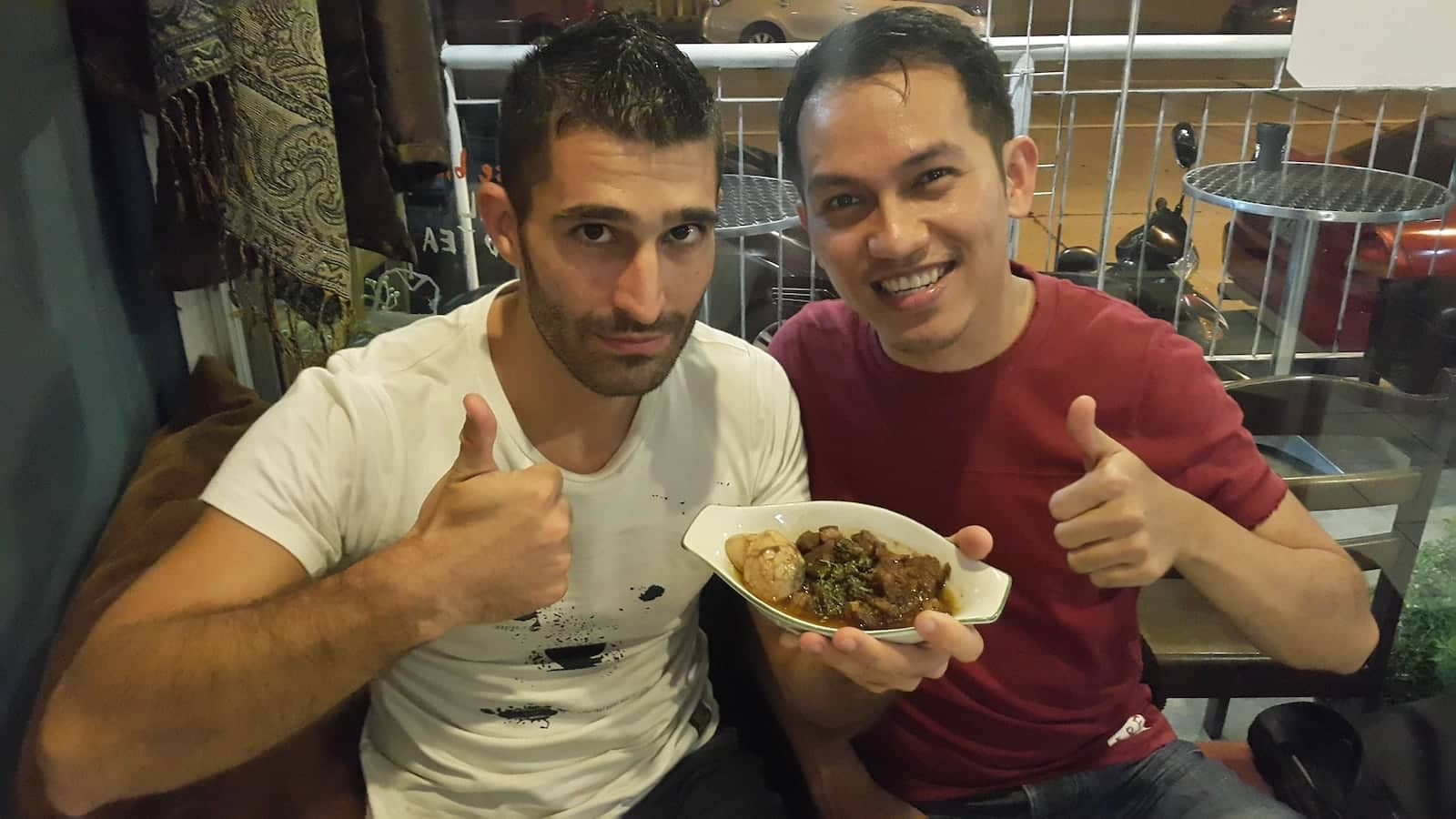
Travel recommendations for the Philippines
Credit card with no exchange fees: our favourite credit card for travelling to the Philippines is Alaska Airlines Credit Card. For every purchase we make abroad, we get each time 1 point for every $1 we spend. We also love the fact that there is no expiration on points, so we can redeem them whenever we want with no pressure. The Alaska Airlines credit card has no foreign transaction fees which means we get the best exchange rate when travelling and it comes with many perks when we travel on Alaska Airlines or partner airlines. What else could you ask for ? Ah Yes, for only $100 annual fee, we get all the benefits and a welcome bonus of 40,000 points. No need to think twice!
Transportation: Public transportation is really cheap in The Philippines, but why use buses when you can get a taxi for a fraction of what it would cost at home. Uber is widely used in the Philippines, however, excellent alternatives include Cabify and Easytaxi.
Travel insurance: You wouldn't buy a car without a car insurance. In the same way, you wouldn't get a mortgage without getting life insurance. When it comes to traveling, the logic is the same! Whether you go diving, hiking, or just lay on the beach all day long, you need travel insurance.
Flights: International flights to The Philippines can be pricey. We found some really good business-class flight deals using Skyscanner. Their website is very easy to use and they always offer the best prices. You can even search for the cheapest flights for any given month. Google Flights is another tool we loved using, as it allows you to search for the best business class fares for any given month and destination. Very often, we have found business class flights with fully flat bed for the same price as an economy ticket, thanks to Google Flights.
Check out our Philippines travel video
This is our video of our travels around the Philippines as a gay couple, focusing on the awesome gay scene of Manila, party island Boracay (pre-cleanup!) and the stunning Palawan.
Read more travel adventures like this in our book!
We've published our very own gay travel book called, ‘Out in the World'. It has all our practical safety tips, first-hand advice, and travel stories from some of our favorite destinations.
We hope it inspires you to have a fun and safe trip!
Click on the book to order:

For more inspiration:
- Read about our transformation into mermen on the island of Boracay
- Find out more interesting facts about the Philippines
- Check out the largest pride events around the world
- Then get inspired by these fabulous outfits for gay pride
- And don't forget to pack these must-have accessories for gay pride as well
- These are our favourite scuba diving spots throughout Asia
- Read more about our experiences travelling through Asia as a gay couple
- Heading to Japan? Check out our gay city guide to Tokyo
- As well as our gay Japan itinerary for first-time visitors
- And don't miss out on the experience of becoming a geisha in Tokyo either!
Like this post? Pin it

Happy travels are safe travels
We recommend you always take out a reputable travel insurance before your next vacation. What happens if you suffer from illness, injury, theft, or a cancellation? Many travelers forget about it and regret it when something happens. Better to pay a small price and have the peace of mind and not worry.


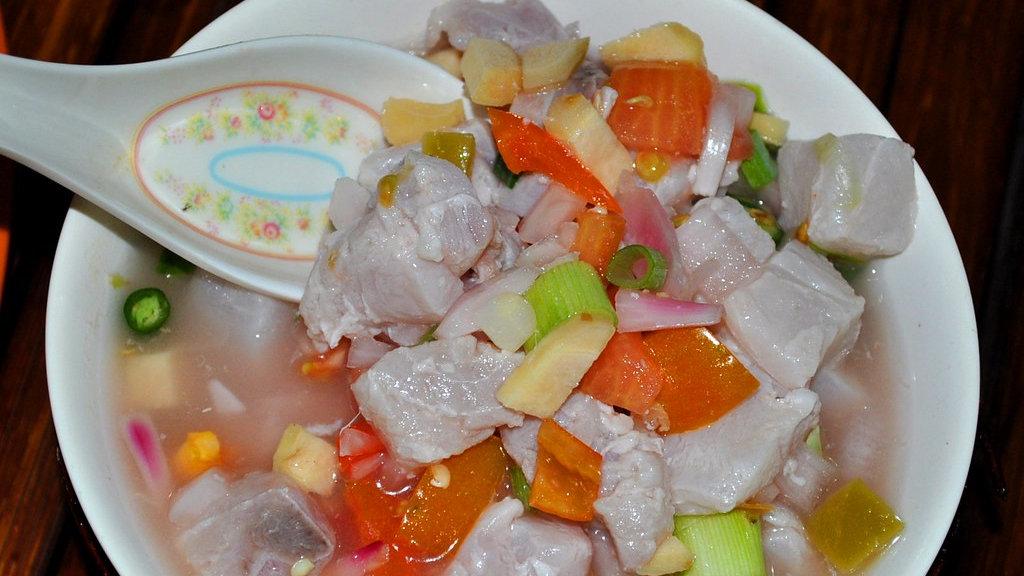
Craig
Saturday 4th of November 2023
Great stuff, thanks, (I think you left out one of the most famous Filipino dishes? Sisig.)
Stefan Arestis
Sunday 5th of November 2023
Thanks Craig!
Joy Sadol
Wednesday 28th of April 2021
Your description of all the dishes you mentioned are accurate although many are now adding twists in their recipes. You have a good source. Two thumbs up for this.
Stefan Arestis
Wednesday 28th of April 2021
Thanks! :)
Cef Dayrit
Tuesday 9th of March 2021
Hi! Good day to all l like what you wrote (l got Hungry hehehe) Just want to make a Correction on the Lumpia Wrapper it is not made from Flour it is made From Rice Flour ! Go to Tarlac City l Reccomend try to eat the Famous Lechon Manok (Chichen) Binringhi you’ll find them everywhere after 4pm when you see grill smoking its there ! Thank You !
Stefan Arestis
Wednesday 10th of March 2021
Noted, thanks! :)
Austrocasian
Tuesday 19th of January 2021
I don't know where you found your sources but for all things involved:
*Lechon in the philippines is not the same as lechon in latin america nor Spain. It's not suckling pig, it's any kind of animal seasoned and cooked on a spit! There's lechon baka and if you had the audacity to go medieval then go for lechon na aso/pusa. We had a history of eating pork even before the spanish arrived but they called it lechon due to the similarities.
Stefan Arestis
Tuesday 19th of January 2021
Noted! Thanks for that.
Gabe
Monday 21st of December 2020
The next time you’re there, travel to Pampanga, in Luzon. It’s the birthplace of Sisig, my favorite Filipino dish- along with a cold beer.
Stefan Arestis
Monday 21st of December 2020
Can't WAIT to return to the Philippines one day :)